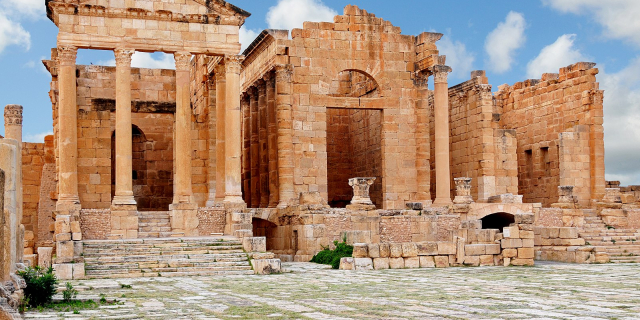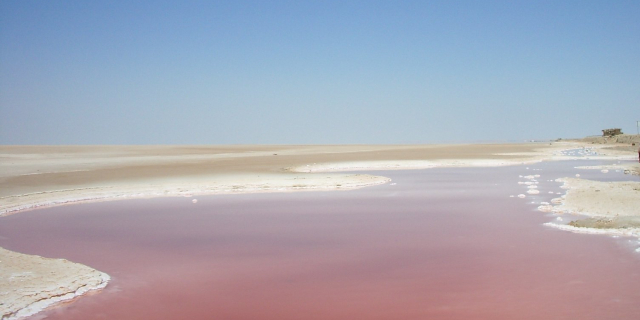Timgad (Arabic: تيمقاد, romanized: Tīmgād, known as Marciana Traiana Thamugadi) was a Roman city in the Aurès Mountains of Algeria. It was founded by the Roman Emperor Trajan around 100 CE. The full name of the city was Colonia Marciana Ulpia Traiana Thamugadi. Emperor Trajan named the city in commemoration of his mother Marcia, eldest sister Ulpia Marciana, and father Marcus Ulpius Traianus.
Located in modern-day Algeria, about 35 kilometers (22 mi) east of the city of Batna, the ruins are noteworthy for representing one of the best extant examples of the grid plan as used in Roman town planning. Timgad was inscribed as a World Heritage Site by UNESCO in 1982.
The city was founded as a military colony by the emperor Trajan in the year 100. It was intended to serve primarily as a Roman bastion against the Berbers in the nearby Aures Mountains, and it was originally populated largely by Roman veterans and colonists.[1][2] Although most of them had never seen Rome before, and Timgad was hundreds of miles away from the Italian city, Trajan invested heavily in Roman culture and identity.[3]
The city enjoyed a peaceful existence for the first several hundred years and became a center of Christian activity starting in the 3rd century, and a Donatist center in the 4th century. During the Christian period, Timgad was a diocese which became renowned at the end of the 4th century when Bishop Optat became the spokesman for the Donatist movement. After Optat, Thamugadai had two bishops Gaudentius (Donatist) and Faustinus (Catholic).[4]
In the 5th century, the city was sacked by the Vandals before falling into decline. Timgad was destroyed at the end of the 5th century by Berber tribes from the Aurès Mountains. In 539 CE, during the Moorish wars, the Byzantine general Solomon retook and rebuilt the city, incorporating it into Byzantine North Africa. The reconquest revived some activities in the city, which became part of a line of defense against the Moors.[5] However, the early Muslim conquests brought about the final ruin of Thamugadi as it ceased to be inhabited by the 8th century.[6]
Travelling Northern Africa, British explorer James Bruce reached the city ruins on 12 December 1765, likely being the first European to visit the site in centuries and described the city as “a small town, but full of elegant buildings.” In 1790, he published the book Travels to Discover the Source of the Nile, where he described what he had found in Timgad. The book was met with skepticism in Great Britain, until 1875 when Robert Lambert Playfair, Britain's consul in Algiers, inspired by Bruce's account, visited the site. In 1877 Playfair described Timgad in more detail in his book Travels in the Footsteps of Bruce in Algeria and Tunis. According to Playfair, “These hills are covered with countless numbers of the most interesting mega-lithic remains”.[7] The French colonists took control of the site in 1881, began investigations and maintained it until 1960. During this period, the site was systematically excavated.[8]

































Add new comment